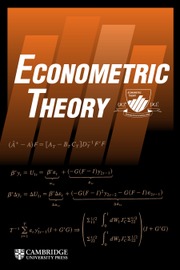No CrossRef data available.
Article contents
OPTIMAL MODEL AVERAGING FOR JOINT VALUE-AT-RISK AND EXPECTED SHORTFALL REGRESSION
Published online by Cambridge University Press: 12 February 2025
Abstract
Since the implementation of the Basel III Accord, expected shortfall (ES) has gained increasing attention from regulators as a complement to value-at-risk (VaR). The problem of elicitability for ES makes jointly modeling VaR and ES a popular method to study ES. In this article, we develop model averaging for joint VaR and ES regression models that selects the two weight vectors by minimizing a jackknife criterion. We show the large sample properties of the estimators under potential model misspecification with increasing dimension of parameters and the asymptotic optimality of the selected weights in the sense of minimizing the out-of-sample excess final prediction error. Simulation studies and three empirical analyses reveal good finite sample performance.
- Type
- ARTICLES
- Information
- Copyright
- © The Author(s), 2025. Published by Cambridge University Press
Footnotes
The authors would like to thank the Co-Editor, Viktor Todorov, and three anonymous referees for their guidance and insightful comments which substantially improved the article. S.J. and W.Y. thank research support by the National Natural Science Foundation of China (Grant No. 72371230) and the Anhui Provincial Natural Science Foundation (Grant No. 2208085J41). W.X. thanks research support by the National Natural Science Foundation of China (Grant No. 12101591). X.Z. thanks research support by the National Natural Science Foundation of China (Grant Nos. 71925007, 72091212, and 71988101).
S.J. and W.X. have contributed equally to this work and should be considered co-first authors.


